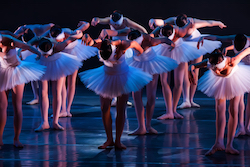Creating a common European identity by digitising its cultural heritage
When we hear about cultural heritage we tend to think of art hanging in a museum, watching a play in the theatre or reading a book about ancient history. As such, cultural history (CH) is something from the past that we can visit and view, but not live and interact with. The RICHES project is rethinking this view of CH within the context of today’s digital-infused, multi-media filled world. How can CH-related institutions redefine themselves to meet changing user needs? Can an increasingly diverse society identify with an often times singular CH? Is it possible to bring CH closer to its audiences? To answer these questions and more, the RICHES project drew on the collective expertise of 10 partners from six EU countries and Turkey. Its interdisciplinary team of cultural institutions, public and national administrations, small and medium sized enterprises (SMEs) and representatives from the humanities and social sciences researched how European CH can evolve to better position itself within the digital age. A wider audience The RICHES project set out to investigate the context of change as it applies to CH. Specifically, it looked to design new ways that CH is performed and preserved and identify how to use digital technology to broadcast CH across audiences and generations. To put this work into perspective, consider the CH of dance. As a performance-based art, one cannot truly experience a dance recital at a museum or in a book. Traditionally dance is only available to the limited audience who can physically attend a performance. However, the RICHES project is expanding the accessibility of such performance-based CH by using audio-visual technology to record the dance and creating virtual performances that any user located anywhere can watch with just the click of a mouse. At the conclusion of its research, the project provided relevant stakeholders with evidence-based policy recommendations, foresight studies, toolkits and best practice guidelines for establishing cooperative initiatives – all of which are available to interested users via an intuitive website. Uniting past, present and future According to project coordinators, the RICHES project is expected to have a widespread impact. For example, the project’s results clearly demonstrate how digital technology challenges the so-called democratic deficit that exists between a creator/performer and an end user, thus encouraging more users to engage deeper and directly with their CH. Likewise, the project shows how technology can stimulate innovative interactions with cultural audiences and users and lead to novel learning opportunities for teaching CH in schools. But of all its results, perhaps the most important is the use of digital CH to foster a common European identity made accessible across Europe’s many diverse communities. As the digital format promoted by the project’s research makes CH available to a wider audience, it helps bridge physical divides to connect communities by building understanding, creating cohesion, fostering cultural exchanges and stressing similarities. In other words, the RICHES project not only created new ways to engage with and experience CH but has positioned digital resources as a means of uniting the past to the present, and the present to the future. For more information please see: RICHES project website
Countries
Germany



